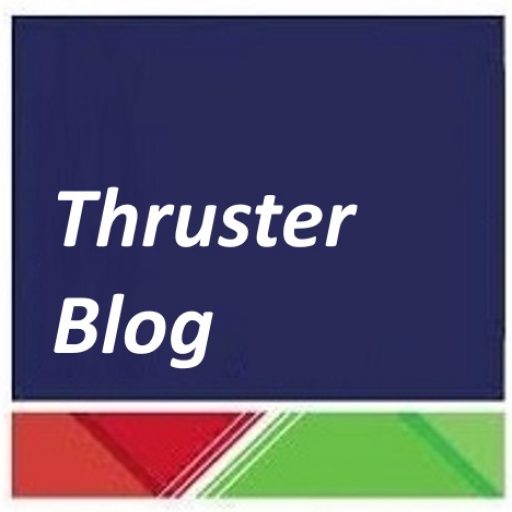What is Jet Thruster?
Jet Thruster uses a centrally located turbine style water pump jet to collect water from below the vessel and direct the water flow to one or more of a series of nozzles installed in the side of the hull to generate thrust for attitude control.
What makes Jet Thruster different from conventional thrusters?
A Jet Thruster system gives you all of the performance benefits of an expensive retractable thruster system for near the same cost of an ordinary tunnel thruster, without the maintenance headaches, and in an incredibly versatile installation package.
How will a Jet Thruster effect the performance of my boat?
There are two loss of performance considerations when installing a thruster system: hull form and loss of displacement. This is most critical on the bow, and especially on sailing monohulls. With conventional tunnel thrusters, the large diameter holes in the sides of the hull create drag on any vessel, and the loss of displacement forward decreases ‘pointing’ ability of a sailboat. Retractable thrusters cure the hull form problem, but still create a loss of displacement, and add weight exactly where you do NOT want excess weight.
Jet Thruster cures both problems by installing small flush mounting 2” thru hull nozzles, and locating the heavy parts of the installation anywhere practical in the hull, often amidships or near the keel.
How many ‘holes’ will the Jet Thruster system require?
A typical installation in a 20-50 ft vessel will require 3 thru hulls for a bow only, or 5 thru hulls for a bow and stern ‘full docking’ system. The intake for the pump jet requires a 3” or 4” intake, and the 2” nozzles are placed on either side of the bow or stern.
How reliable is Jet Thruster?
MUCH more reliable. The system itself is field serviceable without the need to haul out. There are no exposed parts, no propellers or underwater components to be cleaned or maintenanced, and no chance of picking up debris or lines which could jam the system during use.
Unlike a conventional thruster, which must draw in water at the surface, Jet Thruster nozzles expel water from the boat. The pump intake is always installed well below the waterline on the bottom of the hull, away from floating debris. The compressor assembly, valves, and nozzle outlets have been carefully designed to allow any debris large enough to clear the intake grate to pass through the system harmlessly.
The compressor turbine wheel is machined from 306 stainless, with a single field replaceable seal that has no recommended service interval. Meaning no expectation to require replacement in the normal life of the system.
How large a vessel can Jet Thruster support?
In theory, the Jet Thruster system is infinitely scaleable to any vessel size. If you have sufficient room for pump installation, our pumps can be aggregated to increase thrust potential, and additional nozzles can be paired to increase outlet capacity.
In addition, unlike conventional thrusters, a Jet Thruster system can be upgraded by adding pumps and nozzles to increase thrust power. Whereas conventional thrusters must be removed and replaced with a larger system to add more ‘thrust’.
Is Jet Thruster as electrically efficient as a conventional propeller thruster?
No. A turbine style pump jet can never be as mechanically efficient as a propeller, but there are some performance advantages of the Jet Thruster system that make up for the loss.
First, the secret of the Jet Thruster system is the efficiency of our compressor design. Years of development has lead to a complete system that comes in at a little less than twice the wattage for thrust produced over a conventional propeller thuster. This may seem like a large loss, but real world operation and efficiency make this a small inconvenience. See power requirements below.
Second, the flexibility of the Jet Thruster nozzle installation allows for greater ‘moment’ or leverage than ordinary thrusters, because the ‘arm’ or distance from the center of the boat can be increased. Basically, by placing the nozzles further forward on the bow, less power is needed to get the same effect.
Third, a tunnel thruster is often less efficient in the real world due to tunnel length and inefficiency at the hull penetrations due to installation variations. Often, real world value of thrust production for conventional thrusters is as much as 25% less than rated thrust. Jet Thruster nozzles are precision machined and if plumbed properly will always generate full rated thrust for a given system.
How much power will Jet Thruster require?
All thrusters, whether tunnel, retractable, or Jet Thruster, require tremendous wattage to produce thrust, and DC motors and batteries are not ideal for the job. However, low voltage DC power is safe, easy to store, and instantly available.
The industry standard runtime for recreational vessel thrusters is 2 minutes continuous. Above that time, low voltage DC motors start to overheat, and batteries run low.
To produce the equivalent thrust of a conventional thruster, Jet Thruster requires a little less than twice the power. So if a 90kgf thruster normally needs two 12vdc batteries, we recommend four for our system. Two additional batteries adds weight, but a conventional thruster installation adds nearly the same ‘weight’ due to loss of displacement in the tunnel. We believe the loss of displacement forward, coupled with the drag produced by a tunnel, is worth the price of two extra batteries.
More battery is always better, but too much battery is a waste. The key is to find a balance between performance, and required runtime. The need for more than two minutes of runtime per use is rare, if ever, in the real world.


Recent Comments